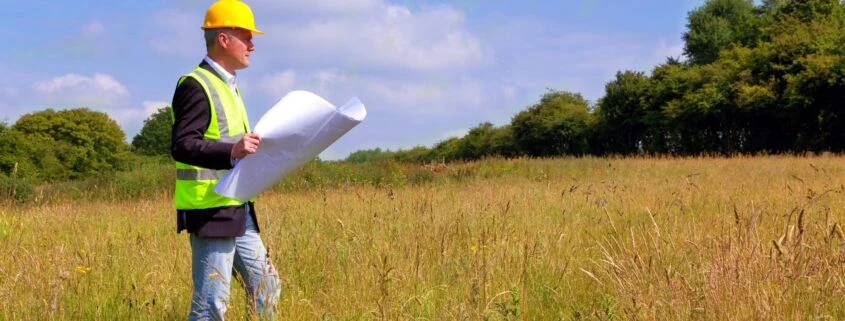Stormwater Pollution Prevention Plan (SWPPP) in Construction: What Is It and Tips for Managing It
Construction sites move fast—equipment rolls in, soil shifts, deadlines press. However, while the builders construct the buildings, the runoff doesn’t wait. It follows gravity, collects debris, and carries every loose particle downstream. That’s where the Stormwater Pollution Prevention Plan (SWPPP) comes in.
It’s not just a regulation—it’s a responsibility. A system. A requirement that directly connects the work done above ground to the conditions of the waterways below it.
What Is a SWPPP and Why Is It a Critical Part of the Process
A SWPPP is a site-specific document. But it’s more than a binder. It’s a declaration that your project won’t let sediment, debris, oils, or waste enter nearby water bodies unchecked. That you have a plan in place to prevent it, and people to carry it out.
Federal law mandates it for projects disturbing one acre or more. That means:
- New developments
- Road expansions
- Commercial sites
- Utility work in open land
Because stormwater doesn’t get filtered, it doesn’t head to treatment facilities; it exits. Fast and unfiltered. Straight to streams, rivers, lakes—where it can do real harm if not managed correctly.
Filing an NOI: Where SWPPP Starts
Before the first piece of equipment shows up, you file a Notice of Intent (NOI). This document signifies your commitment to comply with stormwater regulations under a general permit.
The moment that NOI is submitted, your SWPPP must be ready, complete, accurate, and available on-site. It should outline:
- Erosion and sediment control plans
- Preventative steps for fuel or chemical spills
- Inspection schedules (and who’s doing them)
- Site maps, contact names, and weather protocols
The NOI is the gate. The SWPPP is the plan to keep that gate open.
State Stormwater Permit Programs: One Rule, Many Interpretations
The Clean Water Act sets the foundation for effective water management. But states handle the specifics. And no two states interpret stormwater rules in the same way.
Georgia may ask for weekly inspection logs. North Carolina might require additional training for your site lead. Virginia could mandate more detailed sediment control measures.
Before a contractor moves the first bucket of dirt:
- Read your state’s permit requirements
- Document clearly
- Adjust training schedules to meet those expectations
What satisfies federal rules doesn’t always satisfy state regulators. You need both.
Local Requirements: The Third Layer
States regulate. But counties and municipalities often add their conditions on top.
Some local governments require pre-construction erosion reviews. Others want specific fencing grades or setbacks from waterways. It might be additional documentation or faster response times following a rainfall event.
Miss one, and you’re not just out of compliance; the government could stop you mid-project.
Thoughtful planning means checking early:
- City development checklists
- County engineering requirements
- Local enforcement policies on runoff
You don’t want to discover these after the permit. You want the requirements integrated from the start.
Who Needs a SWPPP Permit? More Projects Than You Think
The general rule is simple: disturb an acre, and you’re in. But it gets broader quickly.
Examples include:
- Any project within a larger common plan, even if your phase is smaller
- Utility installs across multiple parcels
- Subcontractors who don’t own the permit, but work on the permitted site
Bottom line: if your work contributes to land disturbance, check first. Don’t assume someone else’s permit fully covers you. It may not.
How To Manage Your SWPPP Without Losing Track
Managing SWPPP isn’t about overcomplicating. It’s about consistency. Planning for what will likely happen and knowing how to respond.
Start with these essentials:
- Build a real plan, not a template—Site-specific maps. Real names. Actual stormwater paths—not generic diagrams.
- Assign a responsible person. Certified if possible. Someone who understands BMPs and knows how to log an inspection correctly.
- Keep the plan accessible. Physical copy, digital version—whatever works. Just ensure it’s up-to-date and accessible.
- Inspect often, especially after storms. Log what you see. Photograph issues. Correct what needs fixing—quickly.
- Train your crews. They should know where the controls are, what not to disturb, and who to notify if something changes.
Construction sites evolve quickly. Your plan needs to evolve with it.
SWPPP as Risk Protection
Managing your SWPPP isn’t just about staying compliant. It’s about:
- Avoiding fines
- Preventing stop-work orders
- Preserving your reputation
- Keeping your projects moving on schedule
The paperwork, the inspections, the effort—it adds up. But what is the cost of non-compliance? It adds up faster.
Invest the time up front. Build a plan that reflects your site, not just your intentions. Train your teams, document your activity, and adjust as needed.
Because SWPPPs, when managed correctly, aren’t a burden. It’s a buffer between your site and the downstream consequences of letting stormwater runoff go unmanaged.
To help you navigate the significant challenges of EPA compliance, contact HB NEXT at (770) 619-1669 or ask an expert for assistance with your SWPPP today.




